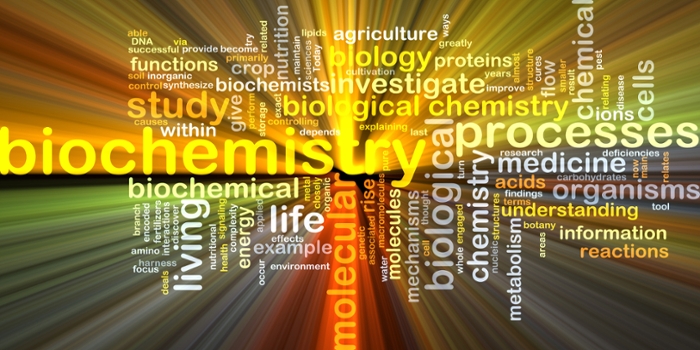BioChemistry
BioChemistry, sometimes called biological chemistry, is the study of chemical processes within and relating to living organisms. BioChemical processes give rise to the complexity of life.
A sub-discipline of both biology and chemistry, BioChemistry can be divided into three fields; structural biology, enzymology, and metabolism. Over the last decades of the 20th century, BioChemistry has become successful at explaining living processes through these three disciplines. Almost all areas of the life sciences are being uncovered and developed by BioChemical methodology and research. BioChemistry focuses on understanding the chemical basis which allows biological molecules to give rise to the processes that occur within living cells and between cells, which in turn relates greatly to the study and understanding of tissues and organs, as well as organism structure and function.
BioChemistry is closely related to molecular biology, the study of the molecular mechanisms of biological phenomena.
Much of BioChemistry deals with the structures, functions, and interactions of biological macromolecules, such as proteins, nucleic acids, carbohydrates, and lipids, which provide the structure of cells and perform many of the functions associated with life. The chemistry of the cell also depends on the reactions of smaller molecules and ions. These can be inorganic (for example, water and metal ions) or organic (for example, the amino acids, which are used to synthesize proteins). The mechanisms by which cells harness energy from their environment via chemical reactions are known as metabolism. The findings of BioChemistry are applied primarily in medicine, nutrition, and agriculture. In medicine, BioChemists investigate the causes and cures of diseases. In nutrition, they study how to maintain health and wellness and study the effects of nutritional deficiencies. In agriculture, BioChemists investigate soil and fertilizers. They also try to discover ways to improve crop cultivation, crop storage, and pest control.
FACULTY IN THIS RESEARCH AREA:
Dr. Douglas Craig - Single Molecule Enzymology
Chemical studies typically involve measurements of large ensembles of molecules with data representing averages. With respect to enzymes, we now know such average values represent a simplification. Single enzyme molecule assay utilizing ultrasensivitive capillary electrophoresis laser-induced fluorescence instrumentation have demonstrated that individual enzyme molecules are not identical. Individual molecules differ with respect to rate and activation energy of catalysis. My research interests are in the study of the basis and function of the heterogeneity of enzyme molecules and its role within the cell. A second interest is the development of ultrasensitive methods for the analysis of biological molecules, particularly enzymes and proteins.
Dr. Michael O. Eze - Health-Enhancement & Public Health BioChemistry: Nitric Oxide, and Reactive Oxygen in Health and Disease and Industry
Humanity is (to varying extents) under chronic exposure to nitric oxide (NO) and reactive oxygen species (ROS), as well as related substances. These come from exogenous pollutants (cigarette smoke, factory and automobile exhaust gases, etc), and from endogenous sources (neuronal and cardiovascular NO synthases form low levels of NO for regulatory events; at sites of inflammation and infection, and around cancerous cells, phagocytes and other immune/inflammatory cells form copious amounts of NO and ROS in response to the same chemical and particulate stimuli; our normal aerobic metabolic activities, including oxidative electron transport chronically produce ROS; etc). ROS include superoxide (O2–), hydrogen peroxide (H2O2), hypochlorite (OCl–), etc. An oxidative stress is imposed on the cell by the presence of ROS and NO. Some chemotherapeutic agents may impose oxidative stress in the cell as part of their mode of action [e.g., artemisinin against malaria].
Dr. Désirée Vanderwel - Pheromone Biosynthesis
Dr. Vanderwel's long-term goal is to understand the BioChemistry of pheromone production in a model beetle species, Tenebrio molitor (the yellow mealworm beetle), in the context of the biology of the organism and its interaction with its environment. Beetles effect a staggering economic and social impact on humankind through the destruction of field crops, stored products and forests. Conversely, many beetles are beneficial as predators of insect pests. Knowledge gained in the quest to understand coleopteran BioChemistry could be exploited to control pest species, or aid in the management of beneficial species.
Dr. Tabitha Wood - Discovery of New Small Molecule Cancer Therapeutics
Our research interests lie in the area of medicinal chemistry, specifically in the discovery of new small molecule cancer therapeutics. Often, adverse side effects are experienced by chemotherapy patients due to the indiscriminant cytotoxic activities of cancer drugs. Researchers have made excellent progress in creating targeted drugs for cancer chemotherapy, but there remains a great opportunity to develop new drugs that offer decreased side-effects while potently treating this diverse disease. Our research in this area involves using some established organic synthetic methods, as well as developing new organic reactions, for creating small libraries of new potential chemotherapeutic drugs. The molecules will not only be characterized for typical evidence of identity and purity, but also for specific biological activities. In doing so, we hope to gain a better understanding of the complex factors involved in targeting tumors over normal healthy tissue. Interdisciplinary research of this nature creates the opportunity for trainees to learn skills from the field of synthetic organic chemistry as well as BioChemistry.

